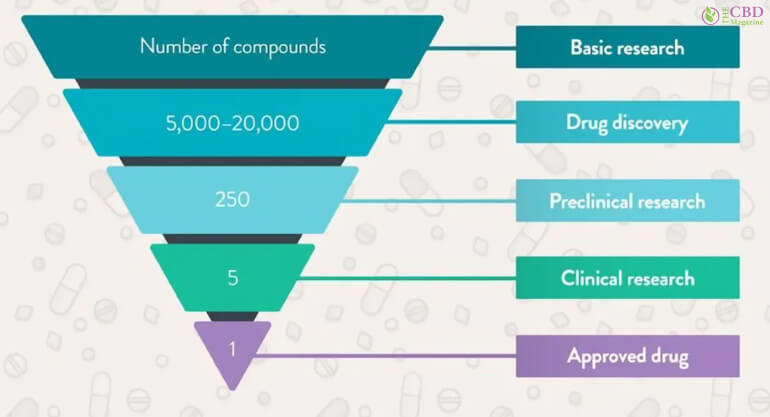Samik has been a literature student all along and uses…
A drug screening coming up, and you are wondering how long does oxycodone stay in your urine or system in general. If this is the case, then you are in the right place. We got all the information you need to answer this question. We would discuss everything, starting from explaining the nature of the substance, the detection bracket, and everything else in between. So sit down, and let me educate you.
What Is Oxycodone?

To put it simply, Oxycodone Hydrochloride is an opioid medication. It is a widely circulated substance that can be found in various forms and formats. These include pills, liquid or intravenous formats. Moreover, there are different-acting oxycodone. Some are meant to work as an extended-release, immediate-release, etc. These factors influence the answer to the question, “How long does oxycodone stay in your urine or system in general?”
Oxycodone is mostly used for medicinal purposes. Mostly it is the physicians who decide the amounts an individual needs through a process of dosage moderation. This decision relies on several factors like BMI or Body Mass Index, age, etc. Generally, what a physician does is assign a low dosage to somebody and then slowly increase the amount as per the patient’s needs. This is to build an individual’s tolerance to the substance and also not to get the person hooked.
Oxycodone can be highly addictive if not controlled. Therefore, there are strict regulations that need to be followed while producing, distributing, and prescribing Oxycodone. As there has been a gradual rise in oxycodone abuse as of late.
Some of the popular brands of oxycodone include Endocet, Tylox, Percocet, OxyContin, Roxicet, Roxicodone, and Percodan.
How Long Does It Takes To Show Effects?

Mostly, oxycodone is taken orally in the form of capsules and tablets. It is usually taken along with food and water for better results. Regular form or immediate-release oxycodone is taken every four to six hours a day. Meanwhile, the extended-release version of the substance should be spaced out at least 12 hours apart.
The effects of general oxycodone generally start showing after 15 minutes of ingestion. Users claim that the effects peak at around 30 to 60 minutes after ingestion. It is during this time when the pain-relieving effects of the substance are felt the most.
While extended-release oxycodone generally can take up to four hours to reach the peak effects. However, when it comes to extended release, there is a second batch of chemical releasing that takes place around the seven to ten hours mark, where the process starts over. This is why extended-release oxycodone should be taken twice in a day, with at least 12 hours of gapping.
How Long Does It Stay In Your System?

Opiates like Oxycodone usually have short life-span or half-lives. In other words, these substances can leave your system quickly. However, when talking about the effects of the substance, it stays longer.
This half-life period of Oxycodone is greatly influenced by the metabolism rates of an individual. The half-life refers to the amount of time it takes for half the medication to be eliminated from your system. Now, metabolism rates vary, and therefore the half-life of medication would vary as well.
Usually, immediate-release oxycodone has an average half-life of around 3.2 hours approximately, for most people. This means the body would take approximately around 3.2 hours to eliminate half of the oxycodone dosage. Meanwhile, extended-release oxycodone would take around 6 hours to get out of your system.
However, these timelines are general assumptions as they tend to vary from person to person. Hence, the appropriate thing to do when deciding on the Oxycodone dosage is to consult the doctor and follow the prescription. If you think that you have developed a certain tolerance to Oxycodone, then you should consult your physician to optimally increase the dosage.
Drug Testing Timeline

Metabolites of Oxycodone can stay in your system even after the effects wear off. This is why it is important to know how long it can be detected in your system. This would help you to get an estimate as to how long you should wait to take a drug screening. So, let us look at how long different drug screening would take to detect the metabolites.
- Saliva tests: These are low-cost and produce results immediately. The test can detect oxycodone metabolites upto four days after ingestion.
- Hair tests: With a much higher detection window, hair follicle tests can detect the metabolites for up to 90 days. It takes about a week for metabolites to get to a person’s hair. Therefore, this is a bracket that you can exploit.
- Urine test: A go-to choice for people testing drugs. This can be classified as a multi-spectrum test that can detect metabolites of several different substances like cocaine, amphetamines, weed, etc. The screening period for oxycodone is around four days after ingesting. Usually, a standard drug test does not look for oxycodone metabolites. Still, further tests can determine how long does oxycodone stay in your system for a urine test.
- Blood test: Most uncommon among the lot, blood tests detect can discover metabolites upto 24 hours after ingesting the substance.
Now, the estimated period discussed in this section is by no means uniform and can vary depending on a myriad of factors. These factors include age, sex, length of use, renal functions, and dosage. Hence, you also need to factor in these elements in as well.
FAQ
Q. How long does 30mg oxycodone stay in your urine?
Ans. As discussed earlier in the Drug Test Timeline, the usual detection time for such metabolites is usually around four days after use. So, urine tests taken during that time bracket would definitely show up in the result. Therefore, this is how long does oxycodone stay in your urine.
Q. How Should A Patient Use Oxycodone?
Ans. Primarily, Oxycodone is an opiod with high analgesic capabilities. In other words, it is a drug that is known to form habits in individuals who use it in an unregulated manner. Ideally, therefore, patients must only consume the drug when there is an actual need for it, which is to alleviate pain.
According to medical professionals, a drug like Oxycodone must never be used in long term. This is a drug that is used to alleviate short term pain and nothing long term of substantial because this is a habit-forming drug. Apart from that, oxycodones are quite infamous for leading to overdoses. So, this is a drug that should be used in moderation and according to the regulations. And the regulation is simple, follow your physician’s advice, and stick to the volume your physician has suggested.
Q. What are the signs of Oxycodone Addiction?
Ans: As it is already discussed, oxycodone is primarily an opiod. Which means, as an opiod, it is known to trigger the feel-good neurotransmitters of human brain. Apart from that, the opid has some added effects as well like toning down pain, alleviate anxiety, calming the nerves. These are the general effects of this substance. However, as a patient if you do not consume this substance without any sort of regulation, then things can get quite out of hands. Some of the symptoms of Oxycodone addiction include physical agitation, extreme and sometimes violent mood swings, and depression. Oxycodone Addiction is also a mental ailment that can be best helped via counseling and other similar help.
Final Thought!
So, here are all the things that you need to know bout oxycodone and how it can leave metabolites in an individual’s bloodstream. However, the bracket of this detection time can certainly be subjected to change according to the factors mentioned. However, this guide offers a general overview and definitely would help you to space your drug screenings optimally. Still, there is no conclusive answer to the question, “how long does oxycodone stay in your urine?” Anyway, in the end, you should also remember that oxycodone is a highly addictive substance and should only be used when needed.
Additional Reading:
Samik has been a literature student all along and uses his fluidity to write about multi-niche topics. Aspiring to be a professional writer, he tries to analyze his topic from a critical standpoint but still adds a hint of personal perspective to the end product. Being a person having a general inclination toward global politics and documentary filmmaking, he also wishes to write and document more about numerous conflicts that are brewing in the different corners of the globe.





